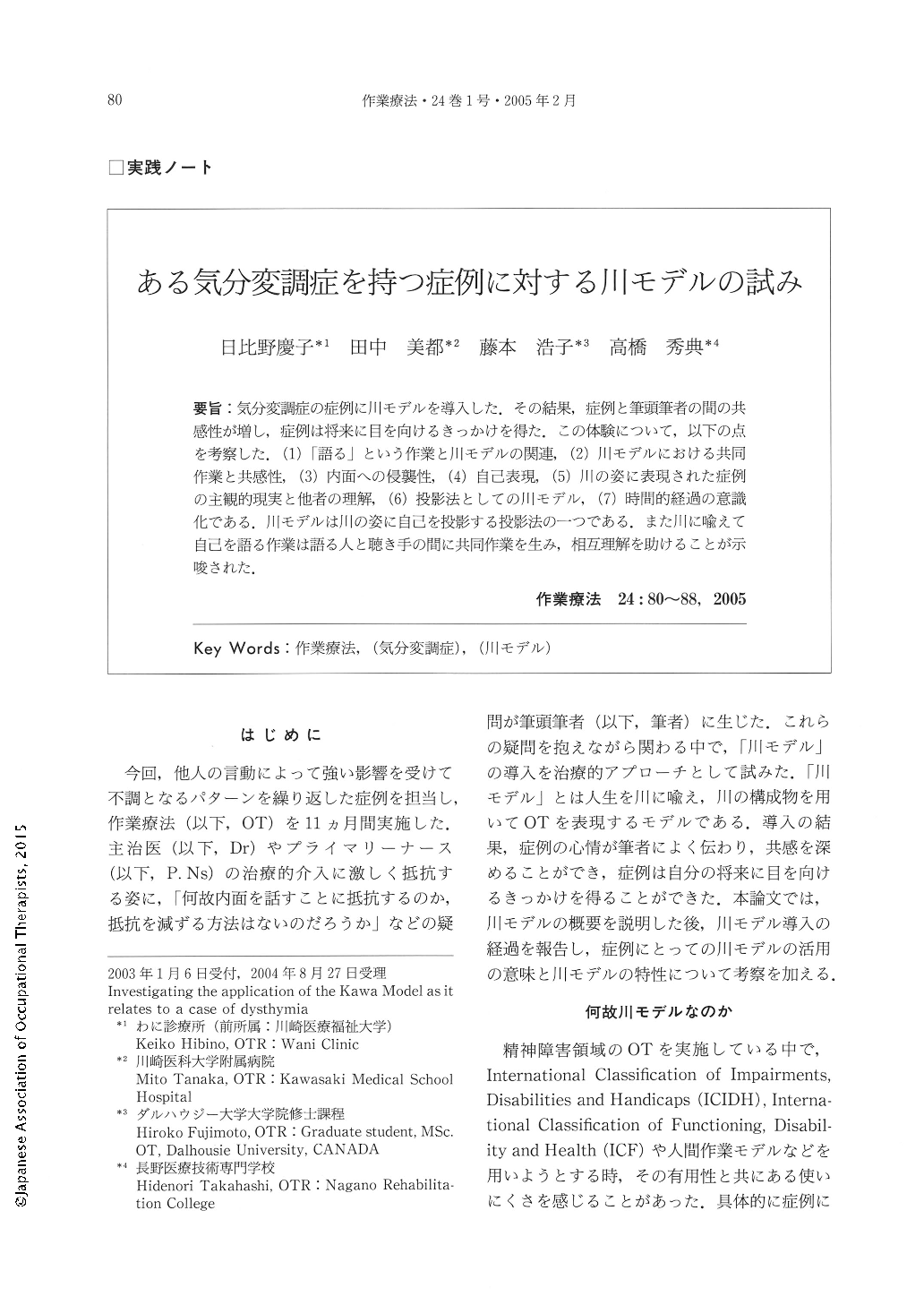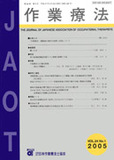Japanese
English
- 販売していません
- Abstract 文献概要
- 1ページ目 Look Inside
- 参考文献 Reference
要旨:気分変調症の症例に川モデルを導入した.その結果,症例と筆頭筆者の間の共感性が増し,症例は将来に目を向けるきっかけを得た.この体験について,以下の点を考察した.(1)「語る」という作業と川モデルの関連,(2)川モデルにおける共同作業と共感性,(3)内面への侵襲性,(4)自己表現,(5)川の姿に表現された症例の主観的現実と他者の理解,(6)投影法としての川モデル,(7)時間的経過の意識化である.川モデルは川の姿に自己を投影する投影法の一つである.また川に喩えて自己を語る作業は語る人と聴き手の間に共同作業を生み,相互理解を助けることが示唆された.
This study reports the application of the Kawa Model as a treatment approach to a client with dysthymia. After 8 months of conventional OT approaches, interviews using the Kawa Model were conducted in 5 sessions within a 3-month period. The approach worked favorably for the client, who previously showed strong aversions toward revealing her inner self using conventional self-reflective interviews. As a result, the client and therapist were able to share an enhanced understanding, and the client was able to look into the future. The following points are discussed : 1) there was a close relationship between storytelling and the use of the model ; 2) using the model evoked collaboration and shared understanding between the therapist and the client ; 3) storytelling through metaphors decreased the invasiveness of the interview and the burden of speaking directly about one's self ; 4) the metaphor of the river was understood by the client to depict her life with ease ; 5) the images given by the client clearly illustrated differences between the subjective view of the client and that of the therapist's ; 6) the metaphor of the river in storytelling was a powerful projective method that allowed the client to express the image that she had inside ; and 7) the image of the river helped her to perceive the passing of time, thus assisted the client to look into the future. From the findings, it was indicated that the Kawa Model could be used as a projective method. It was also indicated that by engaging in the occupation of storytelling, the storyteller and the listener may achieve collaboration and share an enhanced understanding of each other.

Copyright © 2005, Japanese Association of Occupational Therapists. All rights reserved.


